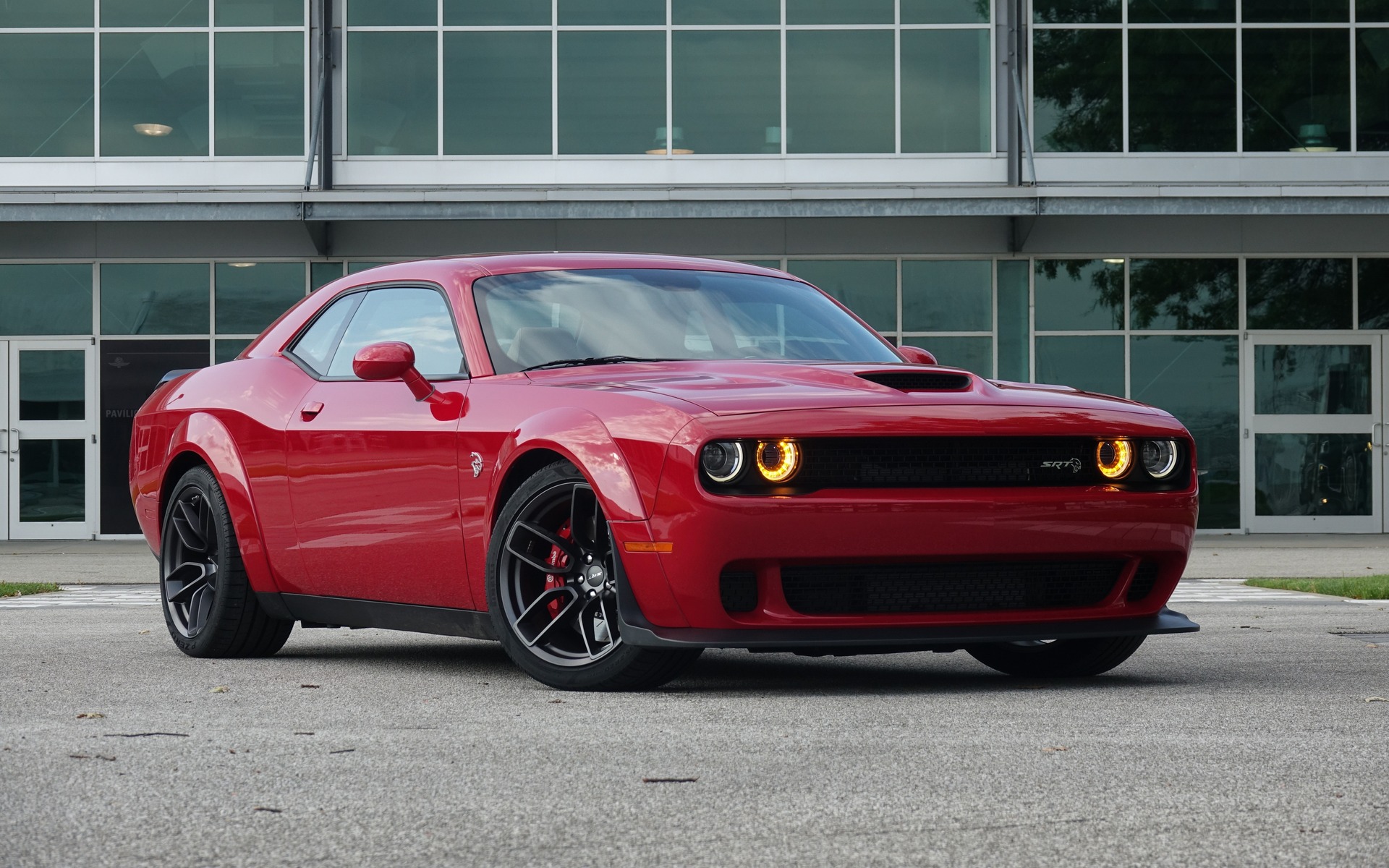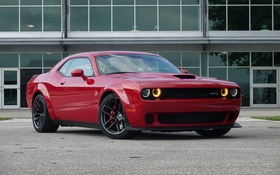2018 Dodge Challenger SRT Hellcat Widebody: the Next Logical Step

| Strong points |
|
|---|---|
| Weak points |
|
INDIANAPOLIS, Indiana – Three years ago, Dodge and its SRT performance division tapped into a massive market by launching the first Hellcat versions of the Challenger coupe and Charger sedan. Those who doubted the viability and safety of these big American cars with 707-horsepower turbocharged V8 engines were shocked at their success.
Dodge and SRT are turning things up a notch this year. You can read about our test drive of the Challenger SRT Demon, which we did while we were in Indianapolis. Bolstered by the positive response they received for this modern take on the old-school muscle car, SRT decided to expand the Hellcat family and use some of the best pieces for a new queen of speed.
- Also: 2018 Dodge Challenger SRT Demon: Hell Hath No Fury
- Also: 2018 Dodge Challenger SRT Demon: Monster Drag Racer
No shortage of confidence
As its interminable name suggests, the 2018 Dodge Challenger SRT Hellcat Widebody combines the Hellcat’s powertrain and the Demon’s wider body. Broad fender flares were added to the Challenger coupe body to cover the drag tires that aim to improve handling for this new Hellcat variant.
This vehicle’s name says it all. Its body is wider than its sibling’s by nearly eight centimetres, and it has wider front and rear tracks (42 and 51 mm, respectively). And while these changes were mainly for functional reasons, they do wonders for this coupe’s appearance, too—in my point of view, at least. This car distinguishes itself from the Demon with a completely different hood, 20-inch rims, Hellcat logos on the front fenders and a slightly bigger rear spoiler.
Appearances are deceiving, however, as the Widebody is 10.4 mm higher than its sister. The horizontal expansion creates this illusion, along with the 305/35ZR20 tires that are much wider than the 275/40ZR20 rubber mounted on the Hellcat. The suspension components are identical, but the Widebody, like the Demon, has electric power steering.

Circuitus interruptus
Here are the numbers: the Widebody is supposed to generate up to 0.97g of lateral grip rather than 0.93. With better bite, its tires should shave off another tenth of a second from its 0-60 mph time and three tenths of a second off of its quarter mile time. I would bet that it also stops in a shorter distance than the Charger Hellcat.
The guys from SRT also assured us that the Widebody can lap a 2.7-kilometre circuit two seconds faster than the first Challenger Hellcat. That’s a very substantial gain—in fact, it’s equivalent to 13 car lengths in a single lap on this length of circuit.
I would have liked to verify the times myself, especially while I was at the legendary Indianapolis Motor Speedway, but it wasn't part of the test. Since they were already preparing the track for the Brickyard 400 stock car event, we weren’t able to use the former F1 circuit. Interestingly, it’s still used for MotoGP racing bikes.
Nonetheless, I was able to push the Widebody on a few of this circuit's turn sequences—in the opposite direction, linked by service alleys. The Hellcat's V8 was true to form on the longest straightaway of this makeshift course. Its 707-horsepower engine released a furious roar that echoed in the empty stands of the legendary rounded rectangle.

Respect the beast
Taking the Widebody around corners requires total focus due to better tire traction. The front end enters the curve with ease, but the tail threatens to get away from you at the slightest touch of the accelerator. Suddenly, I remembered being at the wheel of the Jaguar F-TYPE R as well as the Chevrolet Corvette ZR1 and Z06, sports cars powered by overpowered V8s equipped with big-displacement superchargers. If their gas pedals command the utmost respect, imagine what it’s like to drive the more powerful Widebody.
This makes me wonder if the Challenger hasn’t reached its limits for handling and driving pleasure—on a circuit, at least. On the road, it’s as pleasant, docile and quiet as a 700-plus-hp muscle car can be, as long as you can resist the temptation to hear its fabulous roar, of course. The only exception is the surprisingly heavy left pedal in the version with the manual Tremec gearbox and double-disc clutch.
If you wanted to one-up the Hellcat Widebody, you’d need a lighter, more compact car developed on a more modern architecture. That’s precisely what Chevrolet and Ford managed to do with the current Camaro and Mustang.
To compete with these stallions directly, Dodge and SRT would have to create a new sports car; one worthy of the Mopar cars that rubbed shoulders with the Camaro Z/28 and Mustang Boss 302 during the golden age of the Trans-Am series in the late 1960s. These coupes were more compact than the Charger at the time. And it would be a great opportunity to revive the Barracuda name, too.
But given the success of the current Hellcats, something tells me that this isn’t going to happen overnight. Unless of course the SRT team tries its luck at creating a proudly American sports car on the more compact architecture of its cousin, the Alfa Romeo Quadrifoglio.











